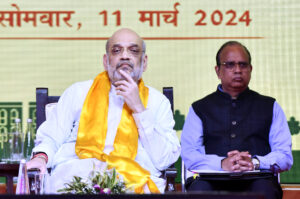How to screen 2 crore people: Delhi readies battleplan 2.0 to stem Covid

[ad_1]
Several measures were taken in the last couple of months to slow the coronavirus spread in Delhi, but infections and deaths have only been spiralling.
In the last one week, the National Capital has reported 3,000 plus cases daily, except for a day, taking the total past the 77,000-mark – worst in any city of the country. In all, 27,261 cases between June 19-26 account for 35% of the viral load the city has reported since March 2 when the first patient was detected. Now, health and administrative authorities from the AAP government, assisted by the Centre and all three civic bodies, are in a scramble to implement a revised Covid-19 response in the city.
As part of the new battle plan, 33,000 health workers are racing to finish screening all 2 crore people in 45 lakh households by July 6. This is coupled with vigorous testing of those found suspects. Remapping of all hotspots was to start on Friday and screening of all houses in these zones has to be over by June 30, with the focus moving from stray cases to dense clusters.
Delhi’s Deputy CM Manish Sisodia said, “All people living in containment zones will be tested.” The big shift came because current hotspots account only for 19% of the total cases.
CCTV cameras drones and cops will ensure a more stringent containment regime this time. Another big change is the decision to trace all contacts.
The Delhi government has to implement this 8-point strategy, as per the recommendations of the Union Health Ministry.
It was chalked out after a high-level panel, led by NITI Aayog member Dr VK Paul, suggested a series of measures, on the intervention by Union Home Minister Amit Shah.
Chief Secretary Vijay Dev had earlier this week asked all eleven district magistrates to form teams by Friday.
FOCUS ON DENSE CLUSTERS
Earlier containment was monitored by district task forces headed by DMs. But now, the task force of each district will also comprise Delhi Police and civic body representatives. There will also be surveillance officials, IT experts to use Aarogya Setu app for contact tracing, members from medical colleges and the department of education and youth.
Until now, the Delhi government would declare a locality as a containment zone if it reports more than 3 cases. But now, the focus would be on dense clusters where vigorous contact tracing would be undertaken. “Containment zones will be redefined in line with the guidelines of National Centre for Disease Control (NCDC),” said an official. There are 280 containment zones in the city.
Testing of suspects, in containment zones, will be augmented by universal application of the rapid antigen method. An instant command system/district level Covid control room led by the DM and technically assisted by a senior public health specialist deputed from either MCD or a medical college faculty with IT support and manpower will be established.
THE TECH TONIC
Officials said that the new response plan prescribes use of Aarogya Setu app and ITIHAS system for cluster projection in containment zones. Surveillance will be guided by IT tech.
“A team of epidemiologist, district surveillance officer and IT personnel, at the district level, shall be trained in coordination with NCDC to utilise Aarogya Setu app and ITIHAS system,” the official said. While Aarogya Setu is a mobile app, ITIHAS is a dashboard which throws up location history of patients in last ten days.
The VK Paul-led Committee has recommended that “Aarogya Setu app coupled with ITIHAS anchored by Ministry of Electronics and Information Technology (MeITY) is capable of tracking movement of cases and contacts and projecting cluster development in 300-metre geography.”
“We have to assess if we need to expand boundaries of containment zones or declare new ones,” said Dr BM Mishra, DM, South Delhi.
But many district officials questioned the use of these applications as there were no clear directives yet. “ITIHAS is mysterious. We do not know how it works. We have asked for assistance,” said a DM.
DOOR-TO-DOOR SURVEYS
Teams comprising personnel from various agencies on Thursday started door-to-door surveys. Each team of about twothree members is covering 40-50 houses every day and each district is expected to be covered in ten days. The work has started in Central district and is expected to begin elsewhere soon.
“We will be forming at least 1,000 teams in our district to finish it by July 6,” said a district official. At least 3,000 workers for each of the city’s 11 districts will be pressed into services each day.
Booth-level officers, civil defence volunteers, Anganwadi workers and civic body staff, among others, are involved. A similar exercise launched two months ago was stopped midway. With ASHA workers and ANMs being overburdened, some districts have asked the civic bodies for help in surveys. The civic bodies will have to appoint a nodal officer at the ward level for proper monitoring.
“The nodal officer has to divide the jurisdiction into sectors and appoint a survey officer in each sector, who will be screening people for symptoms,” said an official.
The civic bodies may deploy DBCs (domestic breeding checkers), sanitation workers, anti-malaria workers and teachers, if required.
SERO SURVEILLANCE
As of now, two types of testing – RT-PCR and rapid antigen – are being conducted. While RTPCR which gives report the next day is considered gold standard, the rapid antigen method is a less time taking.
But, people testing negative in the antigen method need to be tested again with RT-PCR. Now, in the revised plan, a third strategy of antibody testing called ‘sero-surveillance’ will be conducted. This testing involves collecting blood samples to determine if a person is or was infected.
Authorities will launch the serological survey covering 20,000 people across eleven districts and age groups in a few days to determine the spread of the coronavirus disease. The exercise to be conducted jointly by NCDC and the Delhi government from today has to be completed by July 10. Officials said that state- and district-level teams have been identified.
Delhi had conducted 4.3 lakh tests by Thursday which means 23,053 per million people. “From July 27, we are also starting anti-body test. For this, we have taken a sample size of 20,000 people,” Sisodia told India Today TV.
Delhi recorded 3,460 new cases on Friday taking the total to 77,240. A total of 47,091 patients have recovered. Of the 27,657 active cases, 16,249 are in home isolation.
PROTECTING HEALTH WORKERS
Among other focus areas are infection prevention and care of health workers, besides involvement of NGO/ civil society, voluntary organisations and information, education and communication (IEC) awareness. Experts suggested that human resources and technology have to go together, besides an increased investment in public health.
“Contact tracing and effective quarantine are among reasons infected regions in the world have low mortality. This requires phenomenal work by public health workers. Technology can aid it but cannot replace human resources,” Dr Giridhar R Babu, professor and head of life course epidemiology at Public Health Foundation of India (PHFI).
(With inputs from PTI)
[ad_2]
Source link







